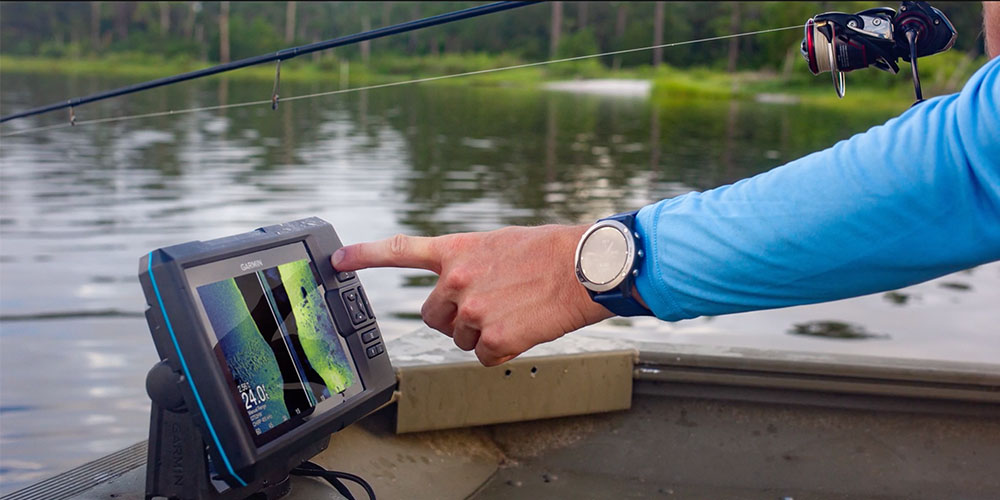As the technology for fishing continues to advance, it can be confusing to understand the difference between a fish finder and a sonar. While both devices use sound waves to locate fish underwater, there are distinct differences in how they operate and the information they provide.
In this blog post, we’ll break down the function and benefits of each device and discuss how they both differ from each other in terms of their usage and capabilities.
First, let’s define the two terms.
- A fish finder is a device that uses sonar technology to locate schools of fish underwater and display this information on a screen for the fisherman. It can also provide additional data such as water depth and bottom structure.
- Sonar, on the other hand, is the technology used to create sound waves and interpret the echoes that bounce back. It’s used in a variety of industries, including military and scientific research, but is also utilized in fish finders to detect and track fish.
So, while a fish finder uses sonar technology, not all sonar devices can be classified as fish finders.
The difference in Sound Frequencies
One key difference between a fish finder and a sonar is the type of sound wave they emit. A fish finder emits low-frequency sound waves, typically in the 50 to the 200-kHz range. These lower frequencies allow for better depth detection and cover wider areas under the water. Sonar, on the other hand, can emit both low and high-frequency sound waves depending on the purpose.
High-frequency sound waves, ranging from 400 kHz to several GHz, are better for detecting smaller targets and can provide more precise information. However, they have limited depth capability and don’t cover as wide of an area under the water.
The difference in Image Displays
This difference in sound wave frequency also affects the image displayed on the screen. Fish finders typically show a graphical representation of fish, structure, and depth while sonar devices may display more technical data such as water temperature and speed of sound transmission.
The difference in the Use of Information
Another difference is in how the information is used. A fish finder’s main function is to locate schools of fish and assist the fisherman in finding a good spot to drop their line. Sonar, on the other hand, can have various uses including navigation, mapping the ocean floor, and detecting objects or debris underwater.
While both devices utilize sonar technology to locate fish, there are distinct differences in the type of sound wave they emit and the information they display. It’s important to have a clear understanding of these differences before purchasing a fish-finding or sonar device for your next fishing trip.
Which One is Better? Fish Finder or Sonar
Ultimately, the choice between a fish finder and a sonar device depends on the specific needs of the fisherman. For those looking for a straightforward tool to locate schools of fish and assist in fishing, a fish finder would be the better option.
For more advanced users or those seeking additional information such as water temperature and speed of sound transmission, a sonar device would be more suitable. Both devices can be valuable tools in the hands of an experienced fisherman, but it’s important to understand their differences and choose the right one for your needs.
How a Fish Finder or Sonar Can Improve Your Fishing Experience
Whether you choose a fish finder or sonar device, utilizing the technology can greatly enhance your fishing experience.
- By providing information on the location of fish and underwater structures, these devices can save time and improve success in finding a good spot to drop your line.
- They can also assist in navigation and avoiding hazards under the water.
- The biggest advantage, however, is the added convenience and efficiency of locating fish. Instead of spending hours aimlessly casting your line, a fish finder or sonar can assist in quickly finding a promising location for catching dinner.
So, do some research and consider investing in a fish finder or sonar device for your next fishing trip. Your future catches will thank you.
Some FAQs (Frequently Asked Questions) About Fish Finders and Sonars
1. Can a fish finder also be used as a sonar device?
While both devices use similar sonar technology, not all sonar devices can be classified as fish finders. This is because of the differences in sound frequencies and display information mentioned above. A fish finder is designed specifically for locating schools of fish and aiding in fishing, while a sonar device may have various uses and may not display graphical representations of fish.
2. Can I use a fish finder or sonar in shallow water?
Yes, both devices can be used in shallow water as well as deep water. However, the depth capabilities vary between different models and brands so it’s important to do your research before purchasing a device.
3. Are fish finders and sonars only used for fishing?
No, while both devices can assist in fishing, sonar technology can also be used for navigation, mapping the ocean floor, and detecting objects or debris underwater. It has a variety of uses beyond just fishing.
4. How do I mount a fish finder or sonar device onto my boat?
There are various methods for mounting, and it will vary depending on the specific model and brand of your device. It’s important to carefully read the instructions and properly install the device to avoid any damage or accidents. If you’re unsure, it may be best to consult a professional for assistance in properly mounting your fish finder transducer onto the boat.
5. Can I use a fish finder or sonar device from shore?
No, these devices typically require being on a boat in order to effectively locate fish and underwater structures. The sound waves emitted by the device need to travel through water in order to detect and display information, so using it from shore will not be as effective. However, there are some specialized devices designed for use from the shore or even from a fishing kayak or canoe.
Wrap Up
Overall, understanding the differences between a fish finder and a sonar device is important in choosing the right tool for your fishing needs. Whether you choose one or invest in both, utilizing the technology can greatly enhance your fishing experience by providing valuable information on locating fish and underwater structures.
So grab your rods, and bait, and consider adding a fish finder or sonar to your tackle box for even better success on your next fishing excursion. Happy fishing!











































